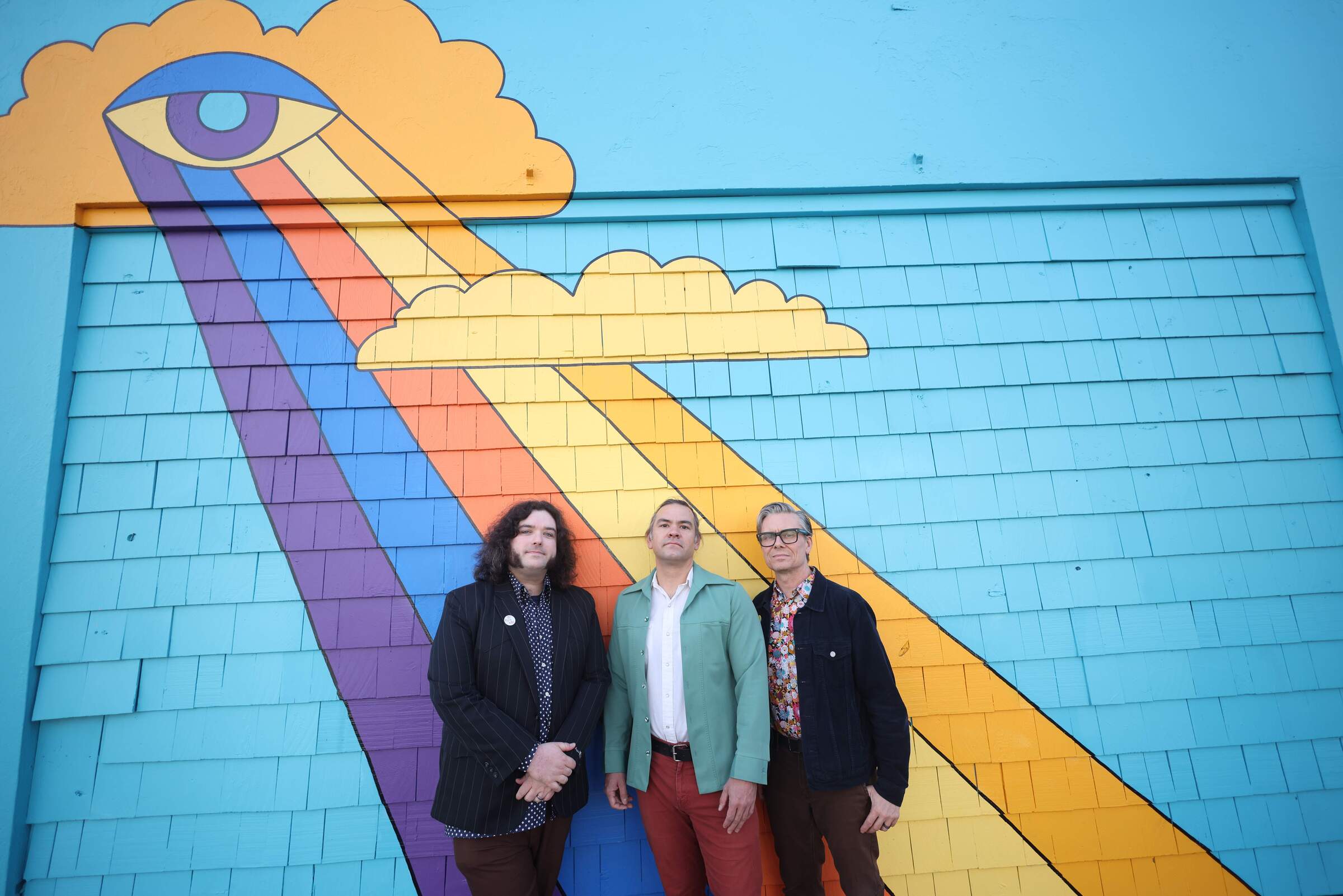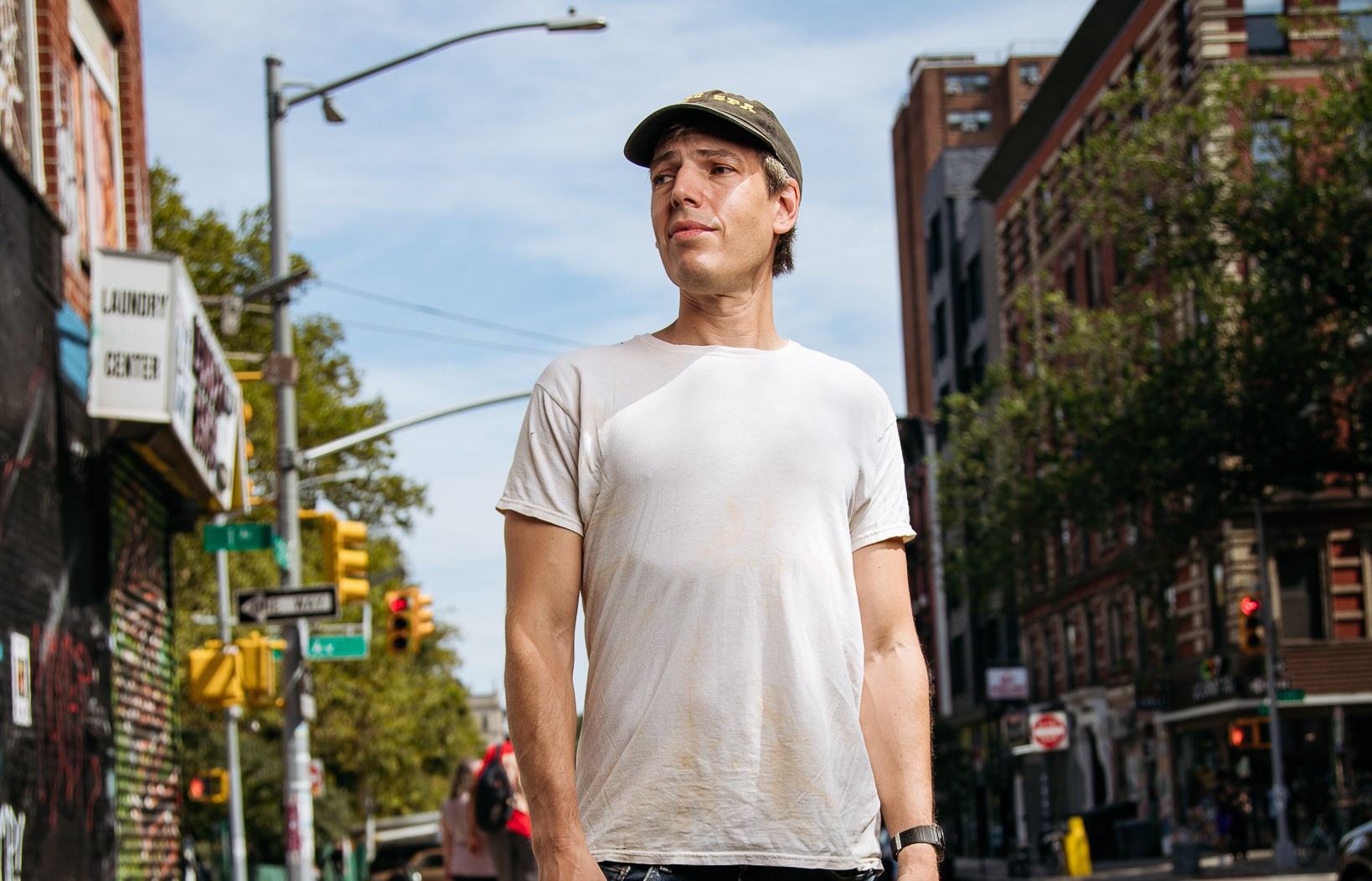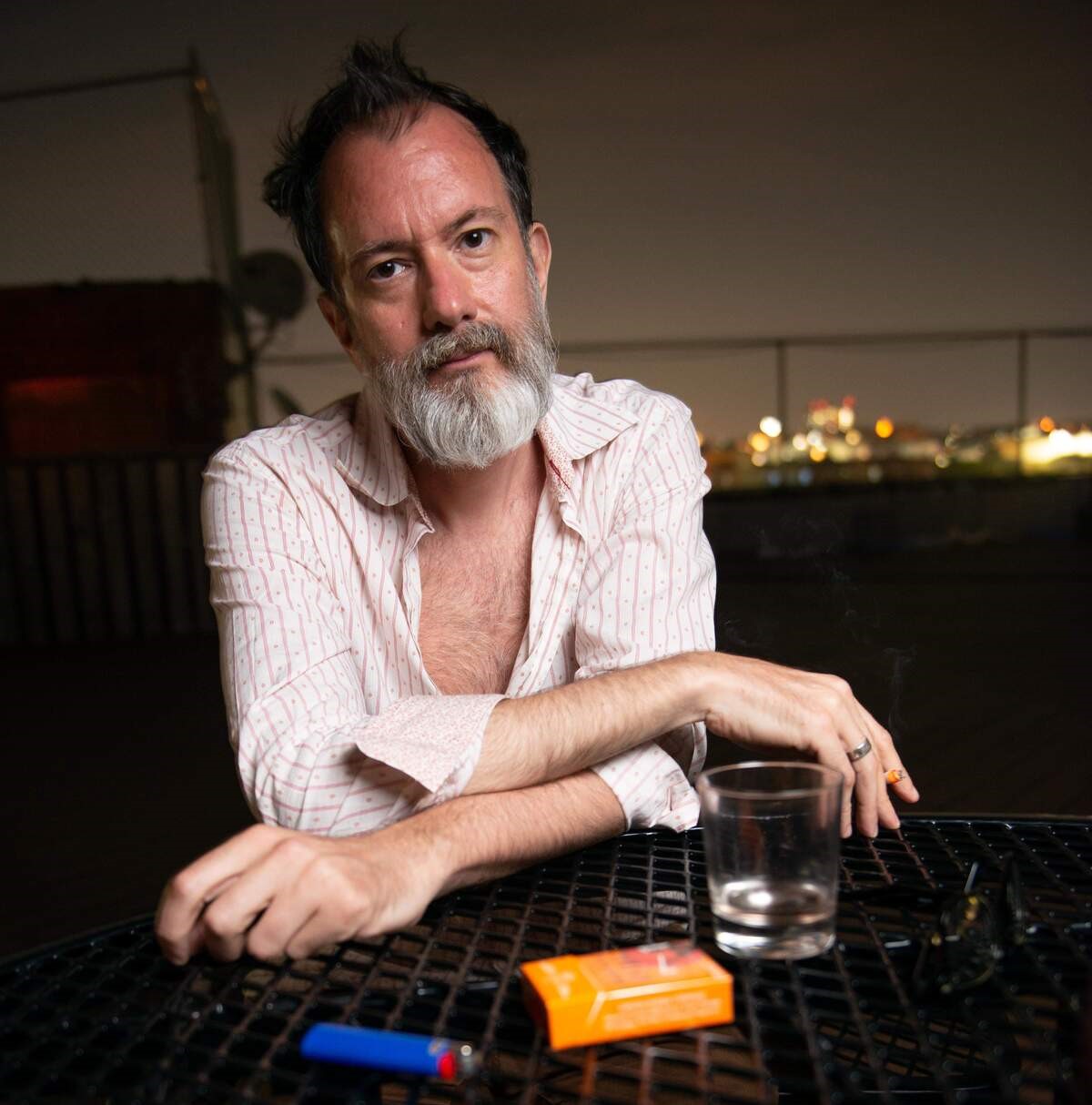Trabants | Interview | “Each of our releases explores a different branch of that very broad musical tree”
Trabants is a vintage-inspired instrumental rock band that seamlessly weaves cinematic elements into their sound, traversing a diverse landscape of music—from surf and garage to the evocative tones of spaghetti westerns and beyond.
Their latest release, ‘Mantra,’ captures the essence of late ’60s psychedelic garage rock, intertwining it with the dynamic spirit of early ’60s rock. The result is a fresh yet nostalgic sound that evokes a sense of a lost future. With roots embedded in the culturally rich yet often overlooked backdrop of Baltimore, Trabants crafts a unique sonic tapestry that marries nostalgia with bold experimentation.
Under the creative direction of founder Eric Penna, Trabants draws on a deep appreciation for melody and atmosphere, creating a sonic journey that transports listeners through meticulously crafted arrangements. Each track serves as a storytelling vessel, enhanced by vintage recording techniques that add depth and character to their music.
As they gear up for a new LP slated for release in 2025, we had the pleasure of conversing with Eric Penna about the band’s journey and musical vision.
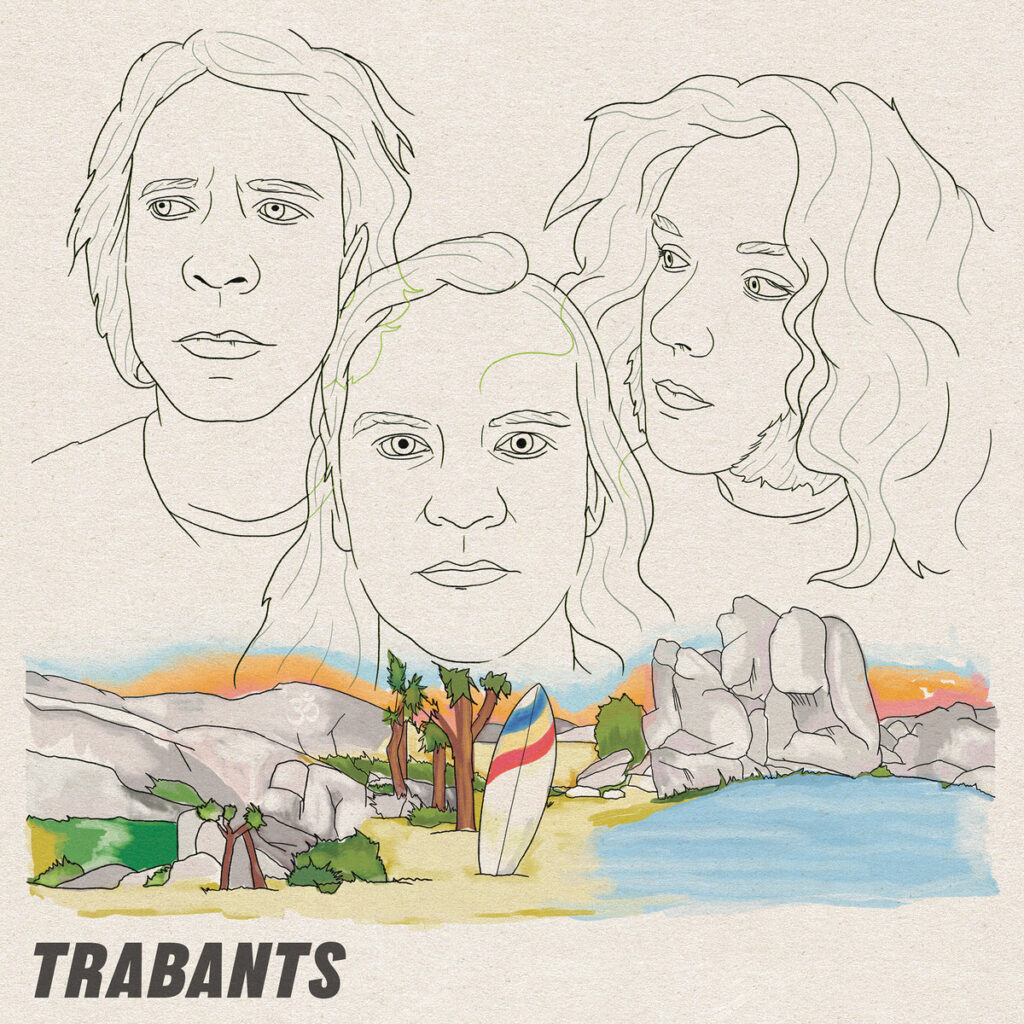
“Each of our releases explores a different branch of that very broad musical tree”
How would you describe your sound?
Eric Penna: I’d say we’re a vintage-inspired instrumental rock band with a cinematic twist. Each of our releases explores a different branch of that very broad musical tree, from surf to garage to spaghetti western, library music, and beyond. Our newest release, Mantra, has us taking on the psychedelic garage rock sound of the late ’60s and fusing it with some powerful elements of the early ’60s rock sound in a way that wasn’t actually done very much in times past. It’s like the sound of a future that never came to be.
Would you like to talk a bit about your background?
My family is Brazilian and immigrated to the U.S. in the ’60s. I was born in Baltimore, Maryland, and grew up a little outside the city. It was not as culturally vibrant as it is today, but it had a strong musical and artistic streak in people like Frank Zappa, Edgar Allan Poe, David Byrne, John Waters, and many more sort of “fringe weirdo” types that make up its cultural past.
How did growing up in such an environment shape your musical style and approach, particularly with Trabants?
Well, early on in my musical path, I met Andy Bopp of the band Love Nut, who was a master craftsman of power pop music and an excellent songwriter. He worked with me when I truly didn’t know anything at all, and I paid very close attention. He taught me how to hone songwriting indirectly by pointing me towards records to listen to and learn from, but with no real direction beyond that. I had to just spend the time listening and learning. Big influences for me were Paul Westerberg, Frank Black, Nick Lowe, Dave Edmunds’ Rockpile, Martin Newell, and Burt Bacharach.
He also taught me about vintage gear. I played his ’60s Vox AC30, and it was the first awesome-sounding amp I’d ever played. I immediately got one and never looked back. I think I had a dinky Peavey tube amp before that. I started to learn a bit about microphones there as well.
When did you decide that you wanted to start writing and performing your own music? What brought that about for you?
I slipped into it rather naturally. There was going to be a showcase of bands from my school in a bar in the city, and to me, that sounded like a real gig, not just playing in the gymnasium or something. So I got a band of friends together and wrote the first batch of songs I would ever write. We learned them, auditioned, and got selected. It’s been pretty constant since then.
Tell us about some of the previous bands you were part of.
That band I had in high school was called Dyslexic Crush, and we wound up being on a Rhino Records compilation and putting a song in a movie. I was next in an angular post-punk band called Ketman. We did pretty well in the Boston area and got to play shows with people like Mike Watt and the Silver Jews. We also got to do some awesome tours, like one we did in Brazil in 2008. We got a little burnt out after a while, though. That band was practicing seven days a week at one point, and the music was pretty demanding. Boston was also becoming inhospitable for musicians, and our trajectory was stunted, so there came a time to move on.
Can you elaborate on the formation of Trabants?
Towards the end of my time in Ketman, I had started to pick up shows with an early version of Trabants, playing an instrumental mishmash of European soundtrack music, surf, and early rock ’n’ roll. Once Ketman ended, I started to make music for commercial licensing, and the sounds I was cooking up for Trabants fit right in with many of my recording strengths, so I began to rely more heavily on a repertoire of original music. I relocated to Los Angeles in order to be close to the right opportunities, and Trabants has been very active ever since.
“It’s all about melody for me”
As an instrumental band, Trabants rely heavily on mood and atmosphere. How do you approach storytelling through your music without lyrics?
It’s all about melody for me. The melodies and the movement of the notes tell a story, and the rest of the process for me is to create a sonic vehicle to best deliver that melody. In doing so, I focus on every element to successfully transport the listener. For example, if I have a melody in the vein of some Morricone western and I want to take you there, I won’t use a close mic on the snare drum. None of those Morricone western soundtracks had a close mic on the snare. It’s more of an ambient, orchestral, “back of the room” sound. On our song ‘The Troubadour,’ I went so far as to pump the drums and percussion into a giant empty warehouse and mic the other side. I certainly don’t use plugins to achieve the sound.
I’ll also focus on these detail-oriented decisions in the songwriting process. That kind of music is very economical and succinct, so I like my songs to move with the same sort of efficiency. To make these sorts of decisions, it helps to listen to a lot of music. The more tricks you have in your mental database, the more effectively you can communicate your sonic ideas.
The name Trabants has an interesting origin. How do you feel this name encapsulates the essence of your music and the ever-evolving nature of the band?
The name, to me, has evolved like the band. In the early days, we were a group of musicians trying to make a living in a town that was getting increasingly difficult to do so in. It reminded me of the Trabant cars I had seen in my travels through Eastern Europe—the car of the working class east of the Berlin Wall.
Later, I learned the German word “Trabant” actually referred to “any naturally occurring satellite,” and that was evocative to me and the way we existed as a band. We found an orbit in the universe of music and have followed that natural trajectory since.
How do you usually approach music-making?
I try to be as authentic as possible. If I’m chasing an idea or a feeling, I like to get as close as I possibly can. Accept no substitute. The cumulative effects of doing so along the entire creative process get you closest to the original idea. Of course, though, music is also often random, so I maintain an open mind, being open to spontaneous changes and happy accidents; they may end up being the best part of the song.
You’re known for your meticulous attention to vintage recording techniques. What are some unique or unconventional methods you used while recording your latest 7-inch, and how did they contribute to the final sound?
Both of the songs were recorded on a Tascam 388, with drums, rhythm electric guitar, and bass recorded live. The 388 has a wonderful vintage quality to it since it runs at 7.5 ips. On the A-side, I really liked taking harmony guitar ideas and playing them on the glockenspiels so I could leave space for the fuzz to do its work and not be lost in overdubs. Fuzz works best when nothing else is distorted around it. My favorite ’60s fuzz songs have one simple fuzz guitar, and everything else happening around it is clean, yet it gives the impression that the whole song is falling apart in its own distortion.
On the B-side, I used a Tycobrahe Octavia fuzz, which I had to look for for years before actually obtaining. To my ear, it’s the closest pedal I’ve ever heard to the Hendrix ‘Band of Gypsies’ album fuzz. That was always the spiritual director of ‘Surfers on Acid,’ a fusion of the surf sound from ’63 with the psych sound of ’69. On both sides of the record, I used backwards guitar, and that was all done on tape. I have an Instagram reel up showing the recording of the ‘Surfers on Acid’ solo. I feel like the reverse guitars done on tape vs. digital produce very different results.
‘Mantra’ and ‘Surfers on Acid’ are described as a journey into the mind and body. Can you delve into the specific influences and experiences that inspired these tracks?
‘Mantra’ is the mirror for you, the listener. What does it make you feel? There is no correct answer, of course, but that’s what makes it interesting and fun. For me, it’s reflective of a time I was seeing many psych bands in Los Angeles and was very inspired by fuzz. I wanted to fuse that with an eastern drone, and so ‘Mantra’ was born. One of our more successful songs is ‘Mecca’ from our ‘Freakout’ album, and in many ways, ‘Mantra’ is the more cerebral sequel to ‘Mecca.’ It takes the surf/psych hybrid into a meditative zone.
The B-side was more overtly designed to fuse two eras of the ’60s that never actually overlapped. I wanted to make a song where the heavy, fuzzy psych of 1968/69 met the surf aesthetic of 1963. In the end, the surfy propulsion of the song coupled with the primal octave fuzz evoked a physical reaction for me.
With a new LP on the horizon, what can fans expect from the next phase of Trabants?
This single is a precursor to our next full-length album, which is currently finished. It’s spiritually connected, but the LP has some songs with an “exotica” twist not present on the single. The Tychobrahe fuzz from ‘Surfers on Acid’ plays a major role on many of the songs. We’re planning for a 2025 release, so stay tuned…
Are any of you involved in any other bands, or do you have any active side projects going on at this point?
The current Trabants lineup in Portland features Dave Berkham, who is well known for his band The Reverberations and for a newer project he’s been working on called Holy Denim. Our drummer, Luke Strahota, has his garage party group, the Hauer Things, and books the “Nuggets Night” shows in town. Our Los Angeles contingent is always very active as well. Bassist Marten Roark has his project Tomemitsu imminently releasing a full-length, while drummer Miles Senzaki does loads of production work and drums in a band called Veronicavon. Glenn Brigman from the band Triptides often sits in with us on Farfisa in L.A. and is often touring around the world with his main act and Levitation Room. I’m currently playing lead and rhythm guitars in the Insect Surfers, which is sort of insane because I was born when that band formed!
We’re all certainly very busy!
Trabants have played alongside legends like Dick Dale and Tav Falco’s Panther Burns. What have been some of the most memorable live performances, and how do these experiences influence your studio recordings?
Playing with Charlie Megira was a highlight. He’s not the most famous person we’ve played with, but he was very real. He meant it 100%. He was Link Wray from the Middle Eastern desert. It was familiar and exotic all at the same time. That sort of thing is magical, unique, and quite rare. It was inspirational.
That said, of course, Dick Dale was fun to learn from. The modern guitar amplifier probably wouldn’t be what it is today without his influence. He created much of the sonic palette all guitar players use, and his tone was monstrous. Hearing him play and looking at his settings on multiple occasions taught me quite a bit that I spent time refining and experimenting with in the studio.
Tav Falco was this Southern American showman exuding all the Viennese flair he soaked in from his newly adopted homeland, playing an interesting repertoire of rock and roll stuff like Wanda Jackson’s “Funnel of Love” with a pickup band of all Italian groovsters. It was a great dynamic.
What are some future plans?
I’m always recording music. I’m ten songs into recording a new album of spaghetti Western music that’s shaping up really well. I’m also writing an album in the style of ’60s Japanese Eleki instrumental rock music that I plan to record early next year.
Let’s end this interview with some of your favorite albums. Have you found something new lately you would like to recommend to our readers?
Marina Allen just released a beautiful set of songs titled ‘Eight Pointed Star’ that I’ve been obsessing over all summer. It’s delicate and hopeful, serene, and warm in a myriad of wonderful ways. Closer to our own genre, The Scimitars recently released their debut. They play an exotic form of surf music with Middle Eastern folk instruments. Delightful stuff for this very warm summer!
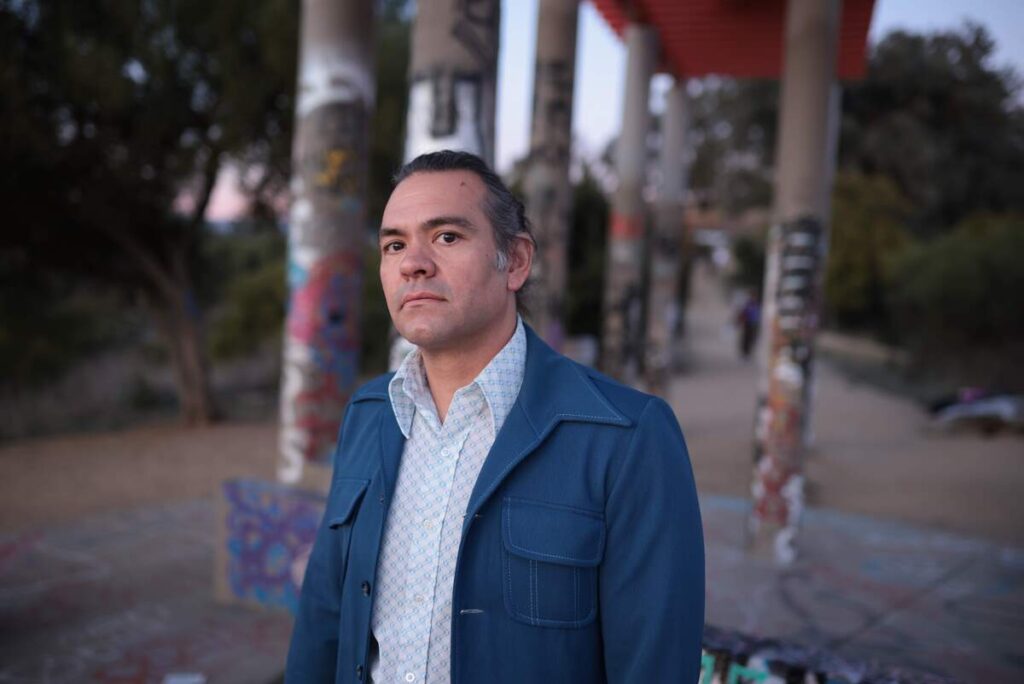
Thank you. The last word is yours.
Thanks for taking the time. Keep doing what you do; it’s important work in today’s media landscape!
Klemen Breznikar
Headline photo: Garcia Aguirre
Trabants Official Website / Facebook / Instagram

